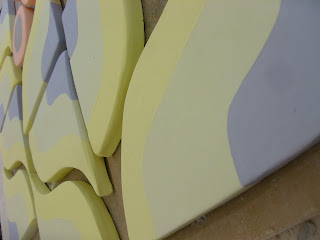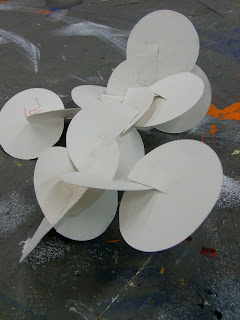Our art education content III field experience this Spring quarter took place at Hughes High School, a Cincinnati Public School near The University of Cincinnati's main campus. Our objective this quarter was to teach in teams of two and work one-on-one with a table of students in the art classroom.Our content class was given a lesson plan by our mentor teacher and we were to teach the students about still lifes through the use of four different artist with varying styles.
Mark Fox
Rice gallery . (n.d.). Dust: rice gallery. Retrieved from http://www.ricegallery.org/new/exhibition/dust.html
Portia Munson
Munson, P. (2011). Portia munson. Retrieved from http://www.portiamunson.com/home.html
Kehinde Wiley
National portrait gallery . (2011, april 26). National portrait gallery:recognize! hip hop and contemporary portraiture. Retrieved from http://www.npg.si.edu/exhibit/recognize/paintings.html
My stylist says . (2011). Kehinde wiley art: my stylist says. Retrieved from http://www.mystylistsays.com/chloe-loves/kehinde-wiley/
Janet Fish
Amherst bulletin . (2007). Amherst bulletin: into the light: mount holyoke college exhibits the luminous work of janet fish. Retrieved from http://www.amherstbulletin.com/story/id/92201/
My teaching partner and I had an interesting field experience in that we originally started with two students, and then each week after that we would have two new students that were absent in the previous weeks. So we were always re-teaching our first lesson and constantly coming across this hurdle of: How do we build on the knowledge base each week that we establish the week before when we always have new students?
In our last two visits we made to Hughes, all five of the students we had taught were present and we did a small project based on the work of Kehinde Wiley's layering and photorealistic processes. Using bristol, vintage flowered wallpaper designs, magazine figure cutouts, markers, and glue, the students collaged figures with background patterns and made a piece reminiscent of Kehinde. Here's some examples of the working process of our students and their results:
A major part of our Hughes experiences was figuring out and exploring the uses of philosophical inquiry in the classroom. We had a lot of discussion with our students over the course of our teaching and we mainly wanted to get them just talking about art.
A discussion activity called Yes, No, Maybe... that we did with the work of Mark Fox, posed the question to the students of: Do you consider Mark's Dust installation art? One student took the role of 'Yes,' and one took the role of 'No.' Through forcing the students to take sides, it required them to think about what they value and what they personally consider art.
They are so used to going through the motions of art class that it was really great to see how we could challenge them and dig into deeper levels of artistic understandings. Our mentor teacher noted to our content class that students who never perform in her class were fully engaged in our lessons and were really excited for us to come to class on Friday afternoon. It was a really great feeling to know that we could be thrown into this unknown situation and come out with such great results! It was a definitely a quarter of experiencing 'the unknown' and figuring out how to deal.









































